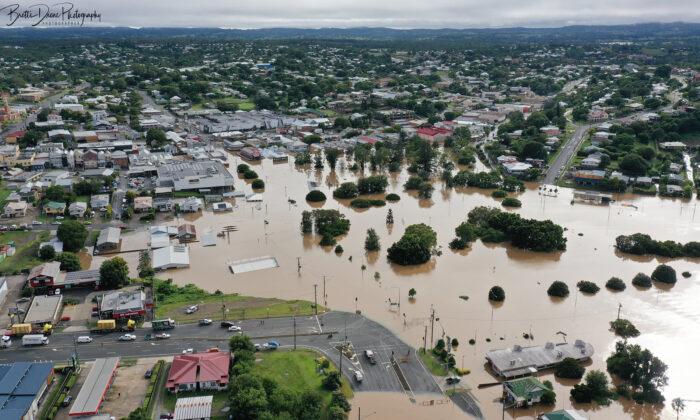House prices in flood affected areas of Brisbane will take a short-term hit, but it was difficult to predict how the market would behave in the medium to long-term.
Antonia Mercorella, the Real Estate Institute of Queensland (REIQ) CEO, told The Epoch Times that while property prices would take an immediate hit, it was unlikely that owners would sell their properties right away.
“Rather, we tend to see these property owners choosing to take the time to repair and improve the homes, so when they eventually come back on the market, they are actually in a much better condition than prior to the floods,” she said.
At the same time, opportunistic buyers would be waiting to grab a bargain with long-term investment in mind, given that prices will bounce back.
Mercorella noted that the market might even experience an increase in sales and rent prices because the floods forced a lot of stock out of the market during a period of heightened demand.
“People have always known that natural disasters are a part of the landscape in Queensland and that Brisbane is a river city that is prone to flooding, so it will be interesting to see buyer behaviour given the current levels of demand and growth and how quickly consumer confidence will return,” she said.
Another factor that made the market difficult to predict for Mercorella was the fact that some of the flooded suburbs were among the city’s most prestigious areas and that waterfront properties have always been highly desirable.

Eliza Owen, the head of Australian research at Australian housing market research company CoreLogic, said her firm reviewed how the Brisbane property market responded to the 2011 floods and found that it took four years for the market to fully recover after the disaster.
Owen said one impact the company saw was the immediate reduction in transactions that bounced back fast.
Rental values in the eight suburbs analysed also did not show decline but increased 4.3 percent over the year.
“This may be due to more subdued rental stock levels available at the time, which could have put upward pressure on advertised rents,” Owen said.
Owen also noted the high value Australians place on housing close to water, as riverside precincts continued to attract premium prices compared to other areas even after the 2011 floods.
“Whether this trend changes based on forecasts of more frequent severe weather events is yet to be seen,” she said.
However, the difference between now and 2011 is the interval between each extreme weather event.
“In 2011, major flooding had not affected the region since 1974, and flooding of this nature was considered a ‘once in a 100-year event.’ For current homeowners, it has been just over 11 years,” Owen said.
The shorter period could potentially affect buyer attitudes away from low lying areas towards low flood risk areas. It could also cause higher insurance premiums that may dissuade buyers from flood prone areas.





